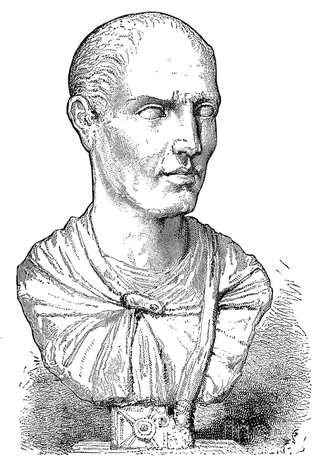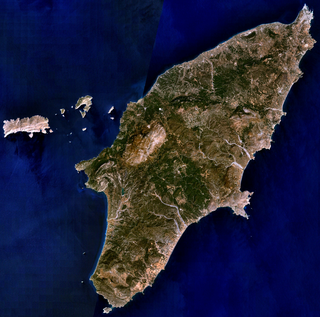Related Research Articles

Lucius Licinius Lucullus was a Roman general and statesman, closely connected with Lucius Cornelius Sulla. In culmination of over 20 years of almost continuous military and government service, he conquered the eastern kingdoms in the course of the Third Mithridatic War, exhibiting extraordinary generalship in diverse situations, most famously during the Siege of Cyzicus in 73–72 BC, and at the Battle of Tigranocerta in Armenian Arzanene in 69 BC. His command style received unusually favourable attention from ancient military experts, and his campaigns appear to have been studied as examples of skillful generalship.

The Mithridatic Wars were three conflicts fought by the Roman Republic against the Kingdom of Pontus and its allies between 88 – 63 BCE. They are named after Mithridates VI, the King of Pontus during the course of the wars who initiated the hostilities with Rome. Mithridates lead the Pontic forces in every war. The Romans would be lead by various generals and consuls throughout the wars, namely Lucius Cornelius Sulla, Lucius Licinius Lucullus, and Gnaeus Pompey Magnus.

The First Mithridatic War was a war challenging the Roman Republic's expanding empire and rule over the Greek world. In this conflict, the Kingdom of Pontus and many Greek cities rebelling against Roman rule were led by Mithridates VI of Pontus against Rome and the allied Kingdom of Bithynia. The war lasted five years and ended in a Roman victory, which forced Mithridates to abandon all of his conquests and return to Pontus. The conflict with Mithridates VI later resumed in two further Mithridatic Wars.

The Third Mithridatic War, the last and longest of the three Mithridatic Wars, was fought between Mithridates VI of Pontus and the Roman Republic. Both sides were joined by a great number of allies, dragging the entire east of the Mediterranean and large parts of Asia into the war. The conflict ended in defeat for Mithridates; it ended the Pontic Kingdom and the Seleucid Empire, and also resulted in the Kingdom of Armenia becoming an allied client state of Rome.
The Battle of the Lycus was fought in 66 BC between a Roman Republican army under the command of Gnaeus Pompeius and the forces of Mithridates VI of Pontus. The Romans easily won the battle with few losses. Mithridates fled to Crimea and committed suicide in 63 BC, finally ending the Third Mithridatic War.

The Battle of Artaxata was fought near the Arsanias River in 68 BC between an army of the Roman Republic and the army of the Kingdom of Armenia. The Romans were led by proconsul Lucius Licinius Lucullus, while the Armenians were led by Tigranes II of Armenia, who was sheltering Mithridates VI of Pontus. The battle was part of the Third Mithridatic War, and was a Roman victory.

The siege of Cyzicus took place in 73 BC between the armies of Mithridates VI of Pontus and the Roman-allied citizens of Cyzicus in Mysia and Roman Republican forces under Lucius Licinius Lucullus. It was in fact a siege and a counter-siege. It ended in a decisive Roman victory.
The Battle of Cabira was fought in 72 or 71 BC between forces of the Roman Republic under proconsul Lucius Licinius Lucullus and those of the Kingdom of Pontus under Mithridates the Great. It was a decisive Roman victory.
The Battle of Lemnos was fought on the island of Lemnos in 73 BC between a Roman fleet and a Mithridatic fleet; it was a decisive event during the Third Mithridatic War. The primary chroniclers of the battle are Appian, Cicero and Memnon, but there remain debates about the specifics in these different accounts.

The lex Manilia was a Roman law passed in 66 BC granting Pompey the military command in the East against Mithridates VI of Pontus.

Pontus was a Hellenistic kingdom centered in the historical region of Pontus in modern-day Turkey, and ruled by the Mithridatic dynasty of Persian origin, which may have been directly related to Darius the Great of the Achaemenid dynasty. The kingdom was proclaimed by Mithridates I in 281 BC and lasted until its conquest by the Roman Republic in 63 BC. The Kingdom of Pontus reached its largest extent under Mithridates VI the Great, who conquered Colchis, Cappadocia, Bithynia, the Greek colonies of the Tauric Chersonesos, and for a brief time the Roman province of Asia. After a long struggle with Rome in the Mithridatic Wars, Pontus was defeated.
The Battle of Zela, not to be confused with the more famous battle in 47 BC, was fought in 67 BC near Zela in the Kingdom of Pontus. The battle resulted in a stunning Pontic victory and King Mithridates' successful reclamation of his kingdom. Mithridates' victory was short-lived however, as within a few years he would be completely defeated by Pompey the Great.

The Battle of Chalcedon was a land and naval battle between the Roman Republic and King Mithridates VI of Pontus near the city of Chalcedon in 74 BC. It was the first major clash of the Third Mithridatic War. The Roman forces were led by Marcus Aurelius Cotta, one of the consuls for 74 BC, while Mithridates had the overall command of the Pontic forces. The Mithridatic forces were victorious on both land and sea.
The Battle of the Rhyndacus occurred in 73 BC between a Roman Republican force under the command of the proconsul Lucius Licinius Lucullus and a division of the army of Mithridates VI of Pontus as part of the Third Mithridatic War. The Romans were victorious.
Marcus Aurelius Cotta was a Roman politician and general who was consul in 74 BC. He was posted to Bithynia with a Roman fleet as part of the Third Mithridatic War. He was defeated by King Mithridates VI of Pontus. Rescued by his fellow consul he reduced the Pontic coast and captured the city of Heraclea after a two-year siege. Returning to Rome in 70 BC, Cotta was acclaimed for his victory. However, around 67 BC he was convicted of the misappropriation of war booty and expelled from the Senate, a signal mark of disgrace.

Caucasian campaign of Pompey was a military campaign led by Pompey that took place in 65 BC and was a consequence of the third Mithridatic War fought over Georgian lands and its neighboring frontiers. Rome sought to expand its influence and establish itself as the overlord of the Middle East. After conquering the Kingdom of Pontus and receiving the subjugation of Tigranes II of Armenia the Romans marched on the Kingdom of Iberia, whose king, Artoces had been an ally of Mithridates VI of Pontus, Rome's premier enemy during the 80's, 70's and early 60's BC.

Quintus Bruttius Sura was a Roman commander who fought in the First Mithridatic War. He was the first Roman commander to successfully resist Mithridates' advance.
The Fimbrian or Valerian legions were two Roman legions which served and fought in all three wars against King Mithridates of Pontus, one of the Roman Republic's chief adversaries during the 80s, 70s and 60s BC. They became a body of long serving legionaries known for their fierce fighting reputation and also, more infamously, for mutiny and abandoning their commander. The legions take their name from the consul Lucius Valerius Flaccus, who first recruited them in 86 BC, and from his subordinate, Gaius Flavius Fimbria, who took command of the legions after inciting a mutiny and murdering Flaccus.

The Siege of Rhodes took place in 88 BC between the people of Rhodes and Mithridates VI of Pontus' army. The Rhodian forces were led by an admiral called Demagoras and the proconsul of Asia, Lucius Cassius, with them. After the defeat of Rome in the Battle of Protopachium, Rome was forced to retreat from Asia and the only major independent power left in that province was Rhodes. Rhodes had previously been an ally to both Mithridates and Rome, but now it only preferred Rome.
The siege of Heraclea was a military investment of the city of Heraclea Pontica during the Third Mithridatic War. The siege was conducted by the Roman proconsul Marcus Aurelius Cotta and the legate Gaius Valerius Triarius. They were besieging the adherents of Mithridates of Pontus, who held the city for the Pontic king. Heraclea was located on the strategically important northern land route into the kingdom of Pontus and had been taken and garrisoned by Mithridates on his retreat from the Siege of Cyzicus. The 4,000-man strong Mithridatic garrisoned was commanded by Connacorex, one of the king's generals, and held out for almost two years. After taking Heraclea, the Romans plundered the city extensively.
References
- ↑ Hans Volkmann, RE, Band VIII A,1, p. 232.
- ↑ Broughton, vol. II, pp. 77, 86, 91.
- 1 2 Hans Volkmann, RE, Band VIII A,1, p. 234.
- ↑ Hans Volkmann, RE, Band VIII A,1, p. 233.
- ↑ Philip Matyszak, Mithridates the Great: Rome's Indomitable Enemy, p. 116 and p. 118; Fratantuono, Lucullus: The Life and Campaigns of a Roman Conqueror, pp. 75–76.
- ↑ Philip Matyszak, Mithridates the Great, Rome's Indomitable Enemy, p. 140.
- ↑ Philip Matyszak, Mithridates the Great: Rome's Indomitable Enemy, p. 141.
- ↑ Arthur Keaveney, Lucullus, A Life, p.167 n.48.
- ↑ Appian, Mithridatic Wars, 89.
- ↑ Philip Matyszak, Mithridates the Great: Rome's Indomitable Enemy, pp. 142-143; Lee Fratantuono, Lucullus: The Life and Campaigns of a Roman Conqueror, p. 107.
- ↑ Lee Fratantuono, Lucullus: the Life and Campaigns of a Roman Conqueror, p. 107.
- ↑ John Leach, Pompey the Great, pp. 186–188.
- ↑ John Leach, Pompey the Great, p. 204
- ↑ Cicero, Epistulae ad Familiares, viii. 7.